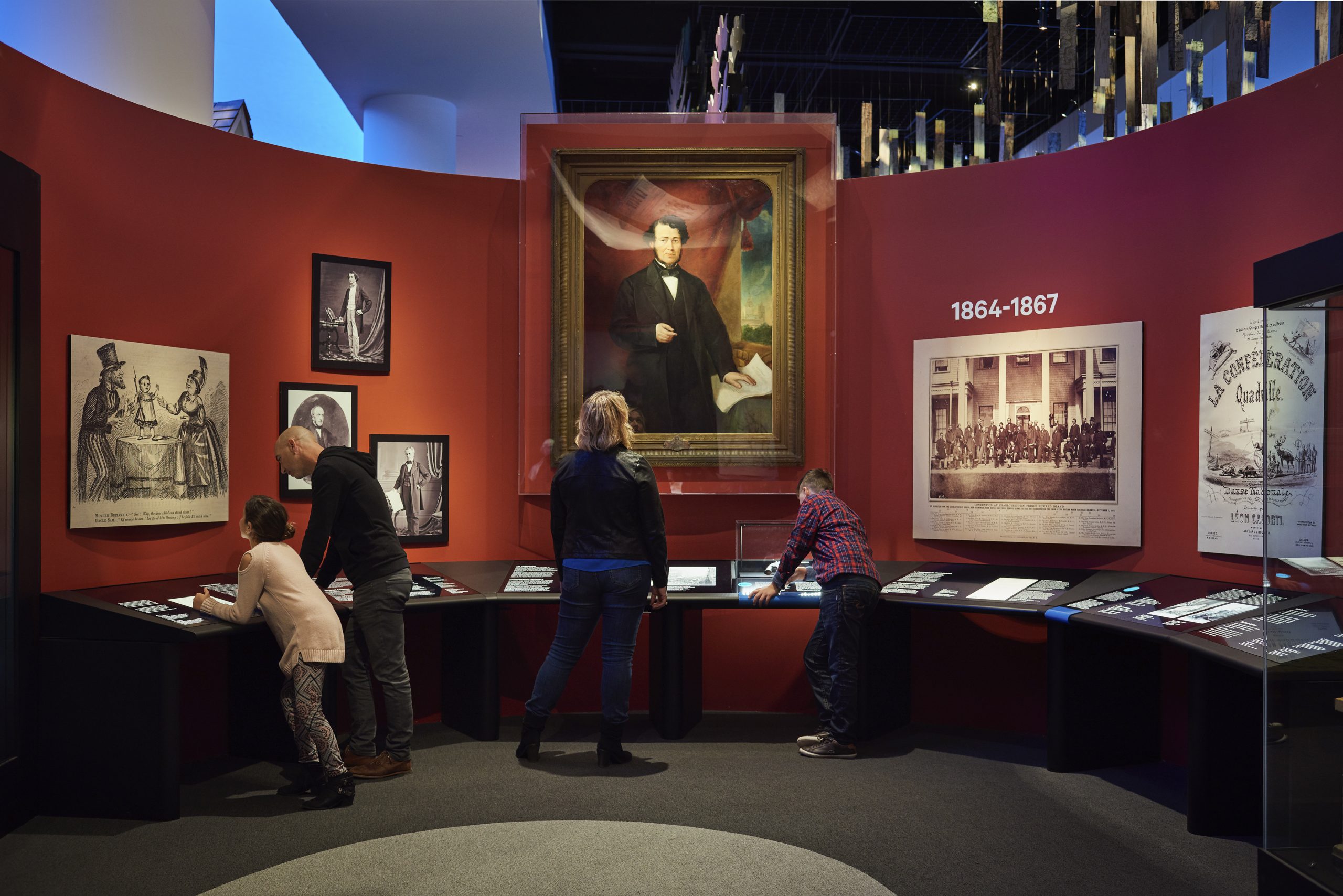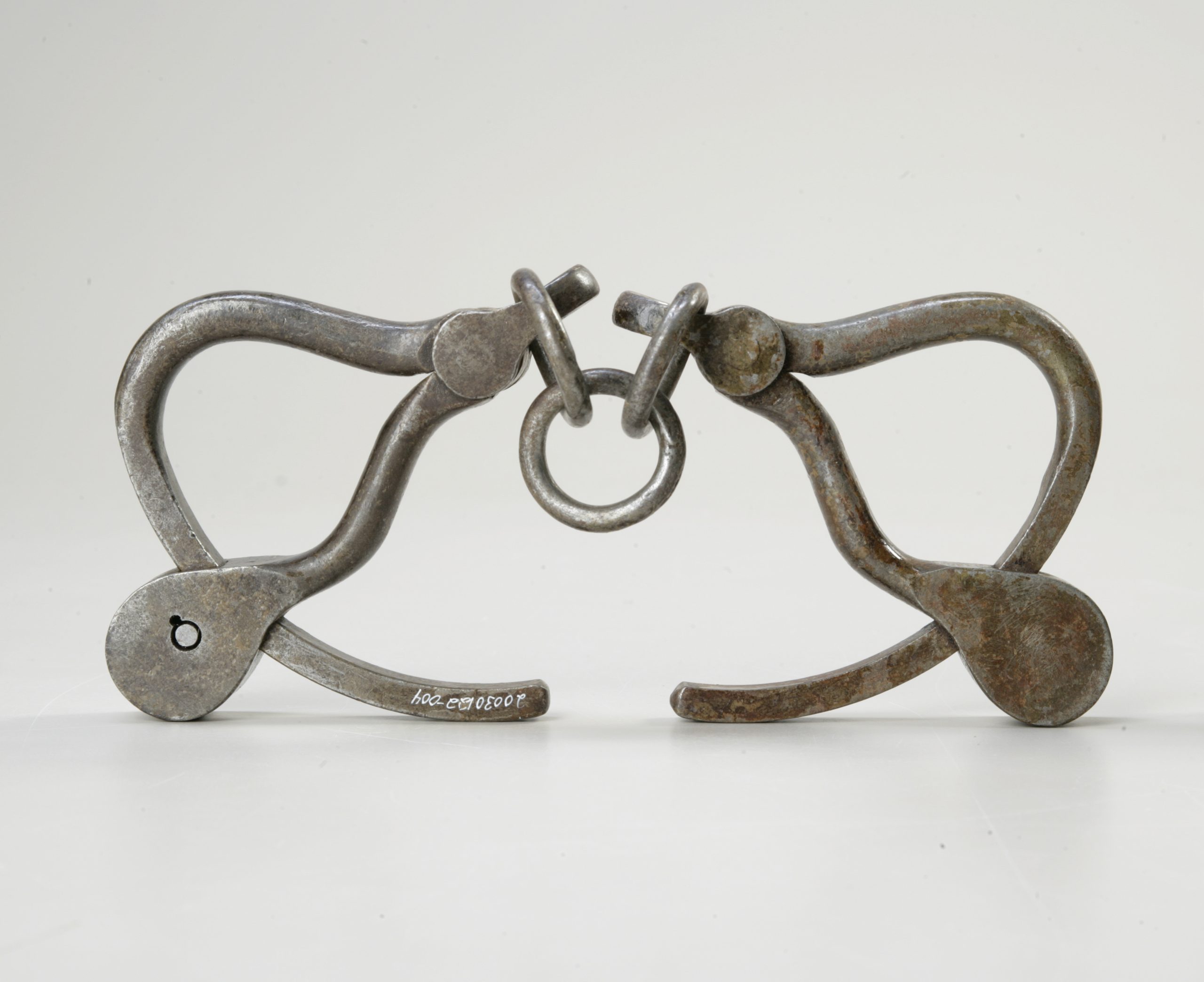Meet the peoples, cultures and stories that shape Canada
Featuring countless stories and thousands of amazing objects, this signature exhibition offers an engaging and thought-provoking look at Canada’s history.
It begins in time immemorial, takes us to the present day, and explores how the past lives on in the ever-changing present.
The Canadian Museum of History gratefully recognizes the Proud Supporters of the Canadian History Hall.
Suggested visit: 90 minutes
The Canadian History Hall offers interactive experiences, immersive spaces, and displays of iconic and fascinating items. It is divided into three galleries on two levels, connected by a ramp.
Gallery 1 – Early Canada
Rossy Family Gallery
Earliest times to 1763. First Peoples create prosperous and vibrant societies and are confronted by newcomers from Europe.
Start at the very beginning, with creation stories shared by Indigenous communities. Discover the early cultural and natural history of the lands that became Canada.
You will see Indigenous objects and learn about their stories, followed by an exploration of contact with Europeans. Follow the expansion of the fur trade and the development of colonial New France until its end in the Seven Years’ War.
Gallery 2 – Colonial Canada
Fredrik Eaton Family Gallery
1763 to 1914. Canada becomes a nation within the British Empire.
Explore colonial life in Canada under British rule through Indigenous and European perspectives. Learn about the transition from colony to country and how the project of nation-building reverberated across different communities.
Gallery 3 – Modern Canada
The Honourable Hilary M. Weston and W. Galen Weston Gallery
1914 to the present. Canada strives for prosperity, independence, and increasing inclusiveness.
Learn how the First and Second World Wars, and the sweeping social changes of the 20th century, affected Canadian society. Discover Indigenous resistance and resurgence in the face of colonial policies such as Canada’s residential school system.
Objects on display document celebrated, contested and difficult chapters in Canada’s contemporary history, ranging from sports to popular culture to nationalism and politics.
At the end of the exhibition, you are invited to share your vision for the future of Canada.
MUSEO
A new addition to Gallery 3, MUSEO is a digital tour guide that lets you ask questions to learn more about selected items on display.
Use your mobile device to scan the QR code and then chat with the system to explore our curators’ extensive research.

Look for signs like this to dig deeper into Canada’s history.
Step inside the Canadian History Hall
Welcome to your history
Visit the stunning Canadian History Hall to explore the world’s largest and most comprehensive exhibition on Canadian history.
Image gallery
Must-see objects
The Canadian History Hall showcases more than 1,500 objects, including several of Canada’s national treasures.
Stories of Canada: The Canadian History Hall
Stories of Canada is the companion publication to the Canadian History Hall. Featuring highlights of this engaging and thought-provoking signature exhibition, this small yet jampacked catalogue is a great memento, as well as a perfect gift for the armchair historian in your life.
You may also be interested in . . .

Online exhibition
The Canadian History Hall
Let us bring the Museum’s signature exhibition to you.

Resource
Museum Quest-ory – Canadian History Hall
Fill out our newest Museum Quest-ory handout as you visit Gallery 1 in the Canadian History Hall.

Exhibition
First Peoples Hall
Celebrate the diversity, history and achievements of Indigenous people in Canada
Admission to the Canadian Museum of History is always free for Indigenous Peoples, including First Nations, Inuit and Métis. Learn more about admission.















